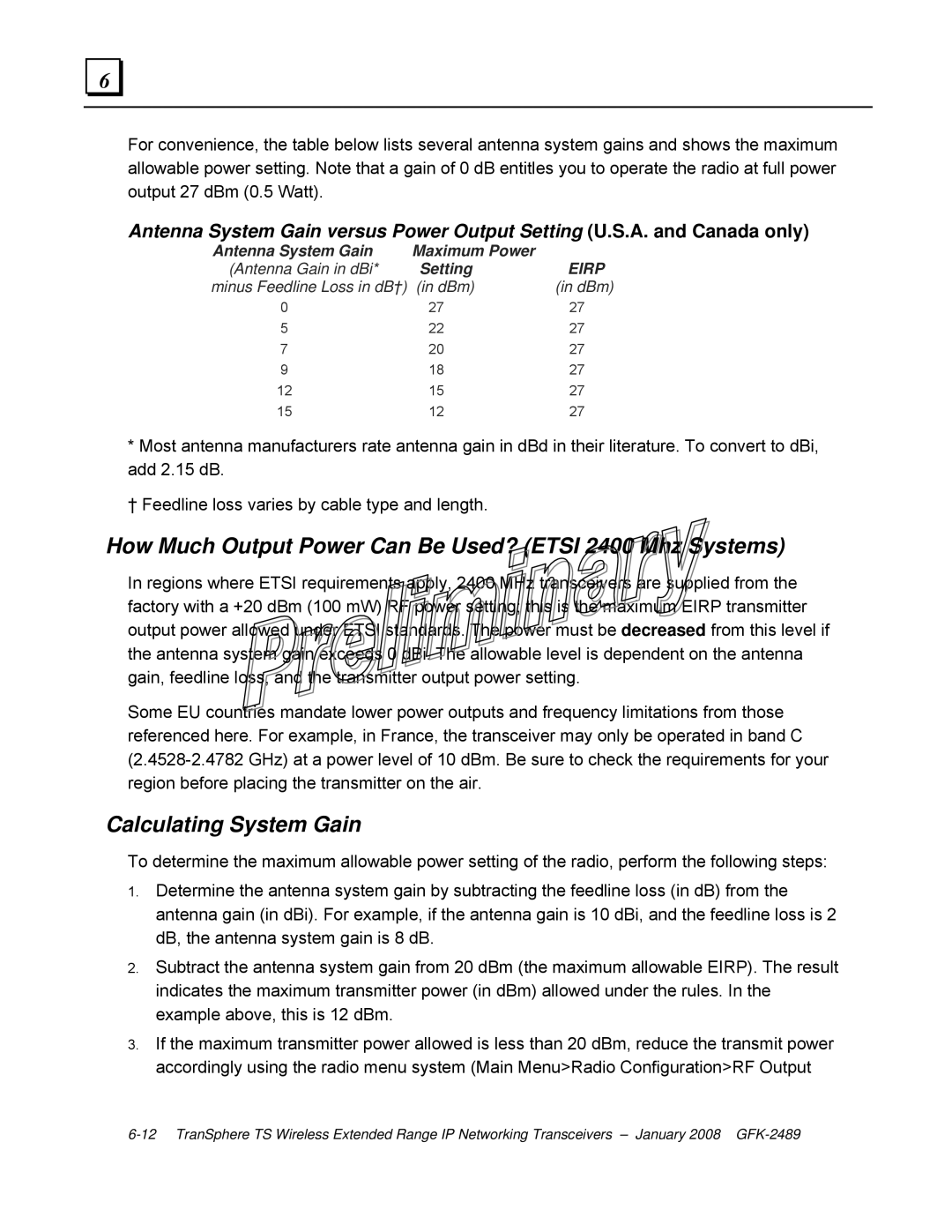
6 |
For convenience, the table below lists several antenna system gains and shows the maximum allowable power setting. Note that a gain of 0 dB entitles you to operate the radio at full power output 27 dBm (0.5 Watt).
Antenna System Gain versus Power Output Setting (U.S.A. and Canada only)
Antenna System Gain | Maximum Power |
|
(Antenna Gain in dBi* | Setting | EIRP |
minus Feedline Loss in dB†) | (in dBm) | (in dBm) |
0 | 27 | 27 |
5 | 22 | 27 |
7 | 20 | 27 |
9 | 18 | 27 |
12 | 15 | 27 |
15 | 12 | 27 |
*Most antenna manufacturers rate antenna gain in dBd in their literature. To convert to dBi, add 2.15 dB.
† Feedline loss varies by cable type and length.
How Much Output Power Can Be Used? (ETSI 2400 Mhz Systems)
In regions where ETSI requirements apply, 2400 MHz transceivers are supplied from the factory with a +20 dBm (100 mW) RF power setting; this is the maximum EIRP transmitter output power allowed under ETSI standards. The power must be decreased from this level if the antenna system gain exceeds 0 dBi. The allowable level is dependent on the antenna gain, feedline loss, and the transmitter output power setting.
Some EU countries mandate lower power outputs and frequency limitations from those referenced here. For example, in France, the transceiver may only be operated in band C
Calculating System Gain
To determine the maximum allowable power setting of the radio, perform the following steps:
1.Determine the antenna system gain by subtracting the feedline loss (in dB) from the antenna gain (in dBi). For example, if the antenna gain is 10 dBi, and the feedline loss is 2 dB, the antenna system gain is 8 dB.
2.Subtract the antenna system gain from 20 dBm (the maximum allowable EIRP). The result indicates the maximum transmitter power (in dBm) allowed under the rules. In the example above, this is 12 dBm.
3.If the maximum transmitter power allowed is less than 20 dBm, reduce the transmit power accordingly using the radio menu system (Main Menu>Radio Configuration>RF Output
